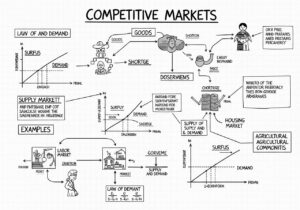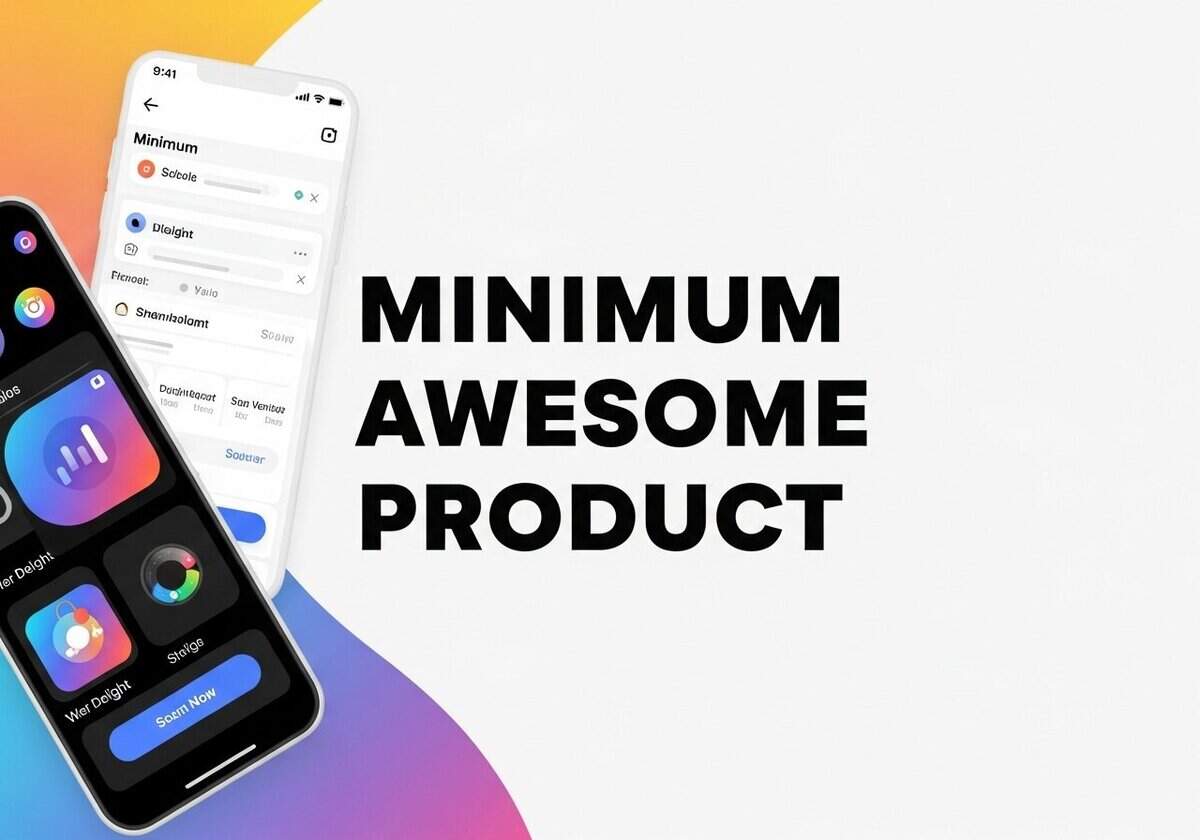In an era where consumer expectations are soaring – with studies showing that companies excelling in user experience can generate up to 60% higher profits than their competitors (Forrester Research) – transitioning from a Minimum Viable Product (MVP) to a Minimum Awesome Product (MAP) has become a strategic imperative for some innovation-driven organizations. This shift centers not just on functionality, but on user delight and engagement. The MVP philosophy has served as a critical foundation for agile product development, focusing on releasing products that are just viable.
Key Takeaways

- MVP aims for functionality; MAP aims for user delight.
- Transition triggers include user feedback and market demands.
- Shift focus from just viability to exceptional user experience.
- Building MAP requires more iterative development and user insights.
- Successful MAP examples show clear user engagement improvements.
- Aim for MAP too early can lead to resource strain.
Defining Minimum Viable Product, its purpose and core principles
A quick recap on Minimum Viable Product (MVP): it refers to a product that has the most essential features necessary to satisfy early adopters and gather feedback for future development. It is a concept primarily rooted in lean startup methodologies which prioritize speed and efficiency in validating product hypotheses. The primary objective of an MVP is to build a product that allows teams to learn about customers’ preferences with minimal resources and time expenditure. This allows for rapid iterations based on real user input instead of speculative assumptions.

The central idea is to introduce only the features that solve the essential problem for users. Features that do not contribute to this validation process are omitted to streamline the development. This focus aims to produce a working product in the shortest time possible, which can then be tested and improved upon based on observations and user feedback.
For all details on MVP, refer to:
Proven metrics demonstrate the efficiency of MVPs: according to the 2020 State of Agile Report, 62% of respondents cited quicker team delivery of customer value as a direct benefit of leveraging MVP strategies. Furthermore, companies like Dropbox used MVPs effectively when they launched a simple landing page to gauge interest before developing their full application, resulting in over 70,000 sign-ups before any coding began.
A clear differentiation exists between features viewed as “nice-to-haves” and those that are critically necessary for functionality. The latter category should be prioritized during MVP development. Teams should utilize prioritization frameworks like MoSCoW (Must have, Should have, Could have, and Won’t have) to identify these essential elements effectively. This approach ensures that resources are allocated to features that validate the product’s core assumptions.
Tip: when drafting an MVP, consider implementing feedback loops early on to facilitate quicker iterations. Engaging with your users can uncover insights that accelerate your product development cycle.
Minimum Awesome Product: characteristics and how it differs from MVP

Minimum Awesome Product (MAP) encompasses a product with enhanced value beyond basic functionality, aiming to not just meet user needs, but to delight and engage them. Characteristics of a MAP include superior user experience (UX), innovative features, and emotional engagement.
Unlike MVP, which targets the bare minimum required to validate a market hypothesis, MAP focuses on delivering a compelling product that evokes positive user responses. This often involves a combination of aesthetic design, seamless usability, and fulfilling user expectations while establishing brand loyalty.
To illustrate the shift in focus from MVP to MAP, consider two different sectors: software applications and consumer electronics:
- In software, a MAP is exemplified by Dropbox, which transitioned from basic file storage to offering collaborative tools that enhance user engagement and productivity.
- In consumer electronics, Apple’s transition from basic smartphones to iPhones, which combine sleek design, user-friendly interfaces, and a broad app ecosystem, highlights this principle.
Reasons and triggers for transitioning from MVP to MAP

The shift from MVP to MAP is often driven by market feedback, indicating a strong need for products that not only meet essential requirements but also exceed user expectations. As organizations launch MVPs, they frequently gather customer insights which can reveal deficiencies in user satisfaction. For instance, a study by the Nielsen Norman Group found that 70% of new products fail due to poor user experience.
The competitive markets serves as another significant trigger for this transition. Companies attempting to differentiate themselves from competitors must focus on unique selling propositions that resonate deeply with consumers. In sectors such as technology and consumer electronics, where expectations are now inherently high, merely offering a viable product may not suffice. For example, Apple consistently moves beyond MVPs, producing MAPs that combine high functionality with aesthetic value, creating unparalleled user loyalty.
Tip: engage users through beta testing phases. Solicit feedback on additional features that could enhance user experience prior to a broader market launch. This practice can transform a standard MVP into a MAP by focusing on what users genuinely desire.
| Aspect | MVP | MAP |
|---|---|---|
| User Satisfaction | Basic functionality | Exceptional usability and aesthetics |
| Market Differentiation | Simple features | Unique offerings with enhanced user engagement |
| Consumer Expectations | Meeting bare minimum | Exceeding user needs and desires |
| Feedback Loop | Less frequent adjustments | Continuous improvement based on user insights |
Tip bis: again, regularly schedule user feedback sessions to ensure the product evolves according to user expectations, fostering a strong connection between the brand and its audience.
The development process adjustments needed for building a MAP versus a MVP

Transitioning from a Minimum Viable Product (MVP) to a Minimum Awesome Product (MAP) involves significant adjustments in the development process:
- only advanced prototyping: while MVP typically relies on basic prototypes—often low-fidelity wireframes or mock-ups—developing a MAP requires high-fidelity prototypes that simulate real-world usage. High-fidelity prototypes can lead to reduced ambiguities regarding user expectations, ultimately enhancing the final product’s quality.
- real product roadmaps: they should also evolve to reflect a long-term vision rather than just focusing on immediate deliverables. For MAP development, roadmaps should include user-centered goals and key performance indicators (KPIs) that assess user delight and satisfaction. This shift encourages teams to maintain a broader perspective and aspire to achieve superior user experiences.
- (likely) more resource allocation: it becomes more strategic in MAP development. Teams must invest in UI/UX specialists and other more rigorous testing methodologies, leading to increased upfront costs.
| Criteria | MVP Approach | MAP Approach |
|---|---|---|
| Prototyping Fidelity | Low-fidelity | High-fidelity |
| User Feedback Integration | Post-launch | Continuous |
| Resource... |
You have read 80% of the article. The rest is for our community. Already a member? Log in
(and also to protect our original content from scraping bots)
Innovation.world community
Login or Register (100% free)
View the rest of this article and all members-only content and tools.
Only real engineers, manufacturers, designers, marketers professionals.
No bot, no hater, no spammer.



























Related Posts
Workstation Ergonomic Assessment
Engineering Change Order (ECO): Best Practices to Minimize Disruption and Cost
From Lab To Market: The Role of the Pilot Production Run
45+ More Cognitive Science Tricks for Games and Marketing: Psychological and Engagement
45+ Cognitive Science Tricks for Games and Marketing: Psychological and Engagement
Latest Publications & Patents on Zeolites